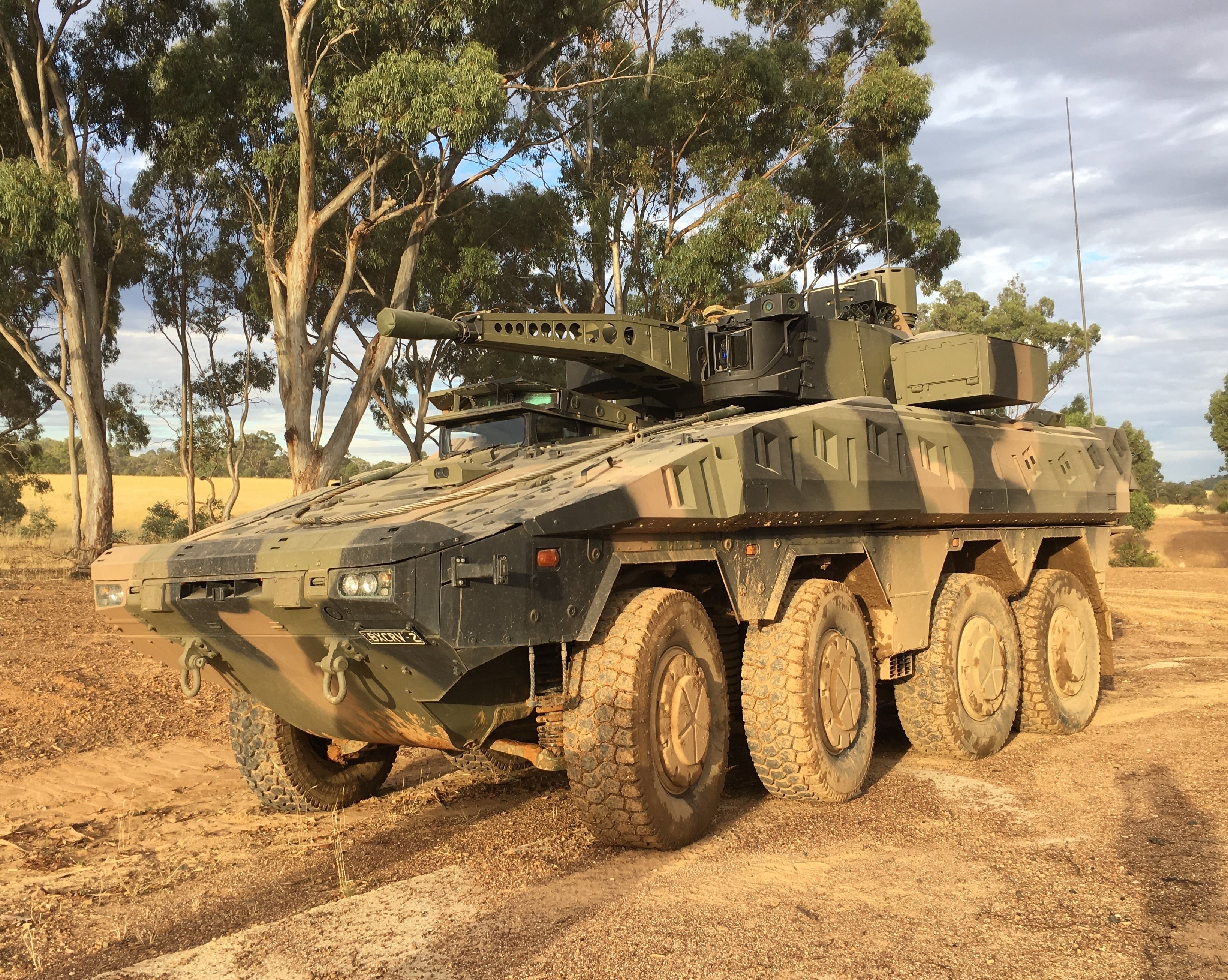WASHINGTON — The U.S. Army has experienced schedule slippages of roughly six to eight months to qualify active protection systems that protect its Stryker combat and Bradley fighting vehicles from missile fire.
The delays are due to a variety of issues, from switching out a radar to software challenges, Col. Glenn Dean, the program manager for Stryker, who also manages the service’s effort to install APS on combat vehicles, told Defense News in a Jan. 29 interview.
Over a year ago, the Army determined it needed to field an interim APS solution for the Abrams tank as well as the Stryker and Bradley. The service decided to rapidly assess off-the-shelf APS systems to fulfill an urgent operational need after failing — over a 20 year period — to field an APS system.
The Army selected three different systems: Israeli company Rafael’s Trophy system, which is deployed in the Israeli army, for Abrams; Iron Fist from IMI, another Israeli company, for the Bradley; and Herndon, Virginia-based Artis’ Iron Curtain for Stryker.
While the Army has stayed on track with Abrams, due to a combination of earlier funding availability and qualifying an already fielded system, it has struggled to stay on schedule with the other two configurations.
[Europe-bound: US Army to urgently field Abrams tanks with Trophy APS]
The other two vehicles didn’t receive funding until fiscal year 2017, according to Dean, but the lack of funding is not factored into the schedule delays that the Army is calculating.
According to Dean, Iron Fist is behind by eight months while Iron Curtain is behind by six months — worse than what was reported by the Pentagon’s head of weapons testing, the director of operational test and evaluation.
The Army is conducting APS testing on each vehicle in three phases. The first phase — the characterization phase — encompasses limited realistic testing and is simply meant to ensure the APS system can work on the platform without affecting the platform’s performance.
The second phase tests production-representative APS on operationally representative systems in realistic combat conditions, according to the DOT&E report published last week. The third phase is deployment of the system, Dean noted. Trophy has entered phase 2 and is expected to wrap up in the summer prior to a deployment decision.
The Iron Curtain delay
Iron Curtain’s delay is partly due to a decision to replace the radar originally intended for the APS system, according to the DOT&E.
But the radar replacement was not based on technical factors, a company official told Defense News. “Artis swapped out radars, not because the initial radar wasn’t performing well, but because the radar vendor had dramatically increased its production price,” the official said. Artis chose a new company’s radar at no cost to the Army.
“The contractor came to us before we started our characterization and said, ‘We think we’ve identified an opportunity for you if we make a change to our radar right now, we will save a tremendous amount of money for you if you decide to produce the system in the future,’” Dean said. “We looked at that and said, ‘Well we have an opportunity, we can save time on this program now and go immediately into test, but if they change the radar after the test, not only do I lose time, I throw out all the data I just had.’”
The Army decided to sacrifice schedule in order for Artis to change the radar in its system, particularly because of the savings that would be generated with a new radar, Dean said.
But the radar isn’t the only reason for the schedule slip.
“We’ve had some other issues,” Dean said. “We have learned that that system probably is not as mature as originally envisioned so the contractor had some difficulty getting to the point they were ready to start characterization and then we had some, I will call it, friction on the test range.”
Iron Curtain has roughly three weeks of testing left to wrap up government characterization. “We will be ready to generate our final reports and bring that into the Army for a decision” in March around the time of the Association of the U.S. Army’s Global Force Symposium in Huntsville, Alabama, Dean said.
The Iron Fist delay
Integrating Iron Fist onto Bradley has been the most challenging because the vehicle, in its current form, does not have the power distribution to handle any APS system. The Army had to take components planned for a future Bradley upgrade in order to install Iron Fist onto the platform. So the schedule slipped in the beginning due to the power issue, Dean said.
However, other issues have continued beyond surpassing that initial challenge.
“The problem was getting the contractor ready for tests and they have continued to have some challenges with their portion of the APS system, getting the logic to work and their software to work consistently, handling power management on the APS end of the project,” Dean said.
The contractors each had time to tune their equipment once installed on the platforms before entering into official government characterization testing.
Dean said IMI came to the Army with some final data at the end of December and it appears the company is close to kicking off its tuning effort in mid-February.
While both companies are delayed, Dean stressed the schedule changes are not costing the government “a dime” as the development work has been internally funded by the contractors.
“We want to give them a fair chance to demonstrate their system,” Dean said. ‘We are not making an investment in developing their system to be any better, we are evaluating what the contractor brings to the table and they will go through the same type of test program that the Abrams has been through.“
What happens if the APS doesn’t work?
At the end of phase 1, the Army could decide to proceed to phase 2 testing and then deployment or it could choose to try another system already qualified or in the process of being qualified, Dean said.
The service could also decide to bring in another APS system not yet considered.
For instance, Rheinmetall’s Active Defense System is waiting in the wings should more funding become available or if a system doesn’t work for a certain platform.

The Army would have liked to qualify more systems, but did not have the funds, Dean said. “ADS would be at the top of the list. It was really close in the design runoff between it and Iron Fist and we ultimately selected Iron Fist and there were other competitor systems.”
Bringing on another system for qualification is now possibly dependent on funding in the fiscal year 2018 appropriations bill, which Congress has failed to approve, instead passing multiple continuing resolutions. “When it’s finally passed it will provide us the ability to do that” Dean said.
The Army could also decide there’s nothing out there that works for a particular platform and would then rely on its science and technology development process for its Vehicle Protection System, which is the program of record for a future system.
Jen Judson is an award-winning journalist covering land warfare for Defense News. She has also worked for Politico and Inside Defense. She holds a Master of Science degree in journalism from Boston University and a Bachelor of Arts degree from Kenyon College.




